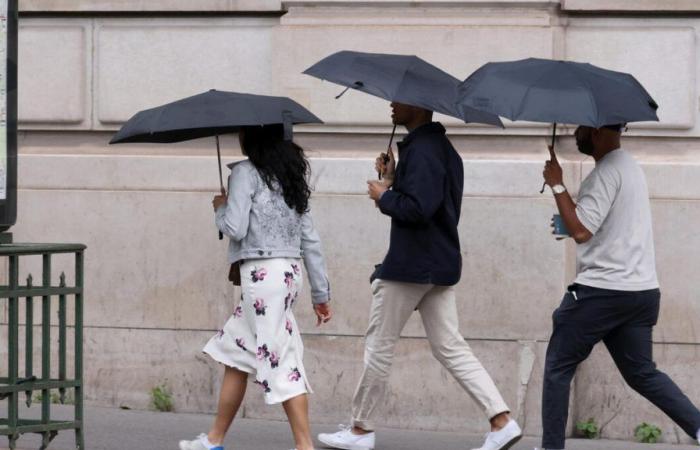In Albania, shepherds had to urgently shear sheep and sheep in the face of a sudden and unexpected rise in temperatures. Their thick wool coat could have been fatal to them, as the thermometer crossed 40°C in the Dukat plain. Usually, shepherds wait until the very end of the month to bare the animals.
In Greece, the Acropolis and the Parthenon closed their doors at the hottest time of the day, on Thursday June 13, to prevent tourists from visiting in 42°C temperatures. In Crete, 44.5°C was even recorded.
And in the coming days, on the other side of the Atlantic, the United States is bracing for a stifling heat wave, with 34 to 36°C in New York. Abnormal temperatures for the period.
October temperatures
Meanwhile, in Paris, scarves, coats and umbrellas are required. And we despair of one day leaving them in the cupboards, fearing to miss out on the terraces and gardens during these days, the longest of the year.
Despite a few jumps in the thermometer, the coolness lasts forever. This Saturday, June 15, again, the temperatures in Nantes or Versailles were equivalent to those of October. And in the four corners of France, the sun meters are in deficit. According to the Infoclimat website, Clermont-Ferrand has only seen the sun for 80 hours since the start of the month, or 65% less than the average.
It’s barely better in Bordeaux, with only 109 hours, or 54% less. Only 113 hours in Paris, a deficit of 44%. Even Nice didn’t see as much sun as usual.
But then, what happens? “These are the effects of cool polar air which is descending over Europe and which is accompanied by a low pressure system extending from the British Isles to Scandinavia,” explains Gilles Macriton, of La Chaîne Météo. It directly influences France, giving this weather not quite in line with what one might expect at this time of year. »
VideoThe “polar stall”, this phenomenon of freshness which will make us moan this week
As for these large differences between east and west of Europe, they are linked to the “jet stream” (strong wind at altitude), which is distorted and does not circulate from west to east as usual. No worries though, according to meteorologists. “It’s quite classic,” says Guillaume Séchet, from BFMTV. Certainly, the months of June and especially May were terrible, but there is nothing abnormal. »
According to him, “it is, conversely, rather the dry and warm springs that we have experienced in recent years which are exceptional. With global warming, we no longer have the same benchmarks. »
“In 2019, we had a very cool period, quite similar, which ended with a heat wave and absolute records,” recalls Gilles Matricon. And in the years to come, the frequency of this type of phenomenon will undoubtedly tend to decrease. »
Will it get better?
Gradual improvements should arrive this week. For now, “the Azores anticyclone has withdrawn from the North Atlantic and returned to its place. You have to show a little patience,” explains Guillaume Séchet. “A cold drop will indeed settle on France. And a bit like a heat pump, it will bring very hot air from Tunisia to the east and south of France,” assures Gilles Matricon.
Temperatures are expected to rise for everyone. Tuesday and Wednesday, it could even be very hot at the foot of the Pyrenees, with more than 30°C. But with the influence of the depression, the west and north of France will have to deal with… showers and storms. “The good weather could set in for a long time from the end of June,” predicts the specialist from La Chaîne Météo.
Do we have to get used to springs without sunshine? “It’s impossible to predict,” says Gilles Matricon. What is true is that the warmer the air, the more water vapor it contains. And therefore more clouds. But we will also have dry periods where temperatures will rise very quickly. »
“What we are observing more are longer and longer blocking phenomena, with situations frozen for longer,” continues Guillaume Séchet, before specifying: “It is really not excluded that we will have a summer hot. »
In its seasonal forecasts at the end of May, Météo France has in fact retained the scenario of higher than average temperatures for the next three months, particularly in the South. And the summer of 2023 was the hottest in the last 2,000 years, according to a study published last month in “Nature,” which reconstructed past climate using tree rings.






